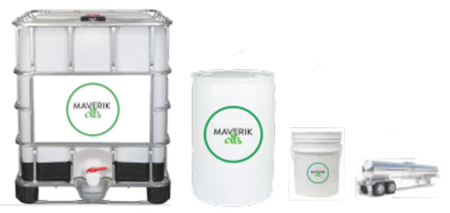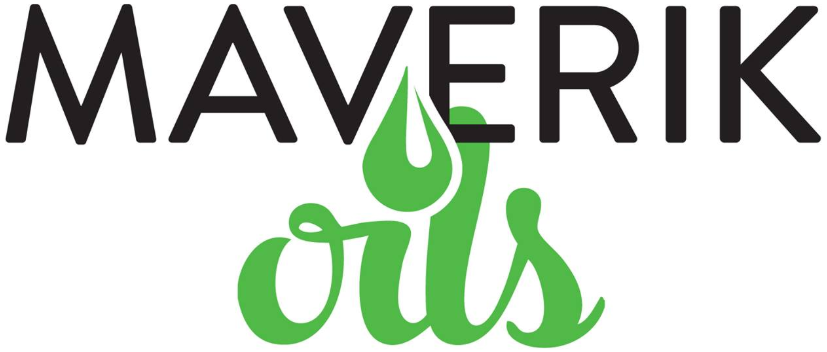Food-Grade Emulsifiers
You add oil to water and it won’t mix – or so it is believed. Without another agent in the mix, that would be the case. That’s why an emulsifier is used to mix unmixable liquids. Emulsifiers play an important role in food processing,
cosmetics, and various other industries where liquids of different viscosities and properties need to be dispersed in each other to create a homogenous emulsion.
What is an Emulsifier and What Does it Do?
Emulsifiers or emulsifying agents stabilize emulsions. An emulsion can be described as a dispersion or mixture of two liquids that are typically unmixable or immiscible. For example, when oil is added to water and shaken vigorously dispersion forms. When you stop shaking the mixture, the oil and water separate. Emulsifiers are added to the mixture to prevent the liquids from separating.
On the microscopic level, emulsifiers are made of molecules that have two ends. One is hydrophobic, which means fear of water, while the other is hydrophilic or water-loving. These molecules bring immiscible liquids together, stabilizing them and creating an emulsion. Lipoproteins play an important part in this reaction.
How Do Emulsifiers Work?
As explained above, emulsifiers work by keeping the droplets from coalescing. They attract both polar and nonpolar
compounds, surrounding the oil droplet with their hydrophobic end and extending the hydrophilic end to the water molecules.
Emulsifiers can be cationic, anionic, and non-ionic. What this means is that they can have a positively charged, negatively charged, and uncharged head group.
What are Some Common Emulsifiers?
When it comes to natural emulsifiers, egg yolk, for example, is one of the most common ones used in the food industry. However, glycerides obtained from various oils such as soybean, sunflower, and palm are also used.
Also, oils obtained from vegetables and animal fat can be processed to make emulsifiers. Special enzymes are used to break down the triglycerides found in these to form mono diglycerides. You will find these as an ingredient listed in various types of fast foods.
What is emulsification in food?
Emulsification in food works the same way. The most common example given is of vinaigrette that you make with olive oil and balsamic vinegar. When you try mixing these two liquids, it can be hard to emulsify them. Similarly, when foods are processed such as mayonnaise, an emulsifier is added (counted as a food additive) as the ingredients used in it are unmixable. It improves the overall texture and appearance of the product while also extending its shelf life.
Besides forming emulsions with water and oil, an emulsifier may also react with other food ingredients. For instance, they can interact with proteins or carbohydrates. They can also act as an aerating and starch complexing agent or crystallization inhibitor. Some of the most common types of organic emulsifiers used in food products such as ice cream:
Egg yolk as it contains lecithin
Egg proteins
Mono and diglycerides
Esters involving fatty acids
Polysorbates
There are several ways emulsifiers are used. For example:
Surface modifiers usually remain on the surface of liquid droplets, preventing them from mixing.
Thickening agents are used to increase the viscosity of the mixture as they slow down the splitting of the two liquid molecules.
Weighting agents are used when there is sedimentation in the mixture.
What Food Products Might Contain Emulsifiers?
There is a wide range of food products that might contain an emulsifier. Do some common examples include?
Margarine
Spreads with reduced fat content
Milk and also other kinds of chocolate
Ice cream
Breads
Frozen desserts
Baked products
Sauces that use cream other dairy products
Processed meats
Some FAQs
Are emulsifiers preservatives?
Yes, emulsifiers do act as preservatives. They do that by preventing liquids in the food product from breaking down over time and spoiling.
Why do we use emulsifiers in food
There are several reasons. They are both preservatives and food additives that prevent food from spoiling while stabilizing and improving its texture and making it much smoother.
What are the examples of emulsifier?
There are both synthetic and natural emulsifiers for food, cosmetics, and other industries. Besides egg yolks, mustard, soy lecithin, sodium phosphates, monoglycerides, diglycerides, DATEM or diacetyl tartaric acid esters of mono- and diglycerides, and simple cellulose.
What is soy lecithin?
Soy lecithin counts under food additives. It’s often maligned but used in food processing quite frequently as an emulsifier or lubricant. Lecithin itself breaks down cholesterol and other lipids by facilitating the mixing of water and oil. You can find non gmo soy lecithin in various foods.
What is sunflower lecithin?
Sunflower lecithin is made by dehydrating sunflowers. It is obtained from the gum part, processed via a cold press system. Organic Sunflower Lecithin and non GMO sunflower lecithin is used in a wide variety of foods, beverages, and cosmetics as a non allergen emulsifier or lubricant.
Are there benefits of lecithin?
Lecithin itself is an essential part of our anatomy. They immobilize fat, making is soluble and preventing it from accumulating in the body in various ways. This means that it has the potential of lowering cholesterol, reducing the risk of cardiovascular diseases e.g. heart attack and stroke. It is also used as an additive in various processed foods. It is found in non-dairy products such as milk powder, gravies, shortening, etc.
Where to Buy High-Quality Emulsifiers
Years of Experience and acumen in the industry have played an important role in enabling us to become a prime supplier of high-quality products. Maverik Oils takes pride in their expertise, offering clients access to quality emulsifying agents without compromising service quality.
With efforts and continuous improvements, we have earned a reputable position in the market that supplies superior products. Whether you require soy lecithin or other forms of emulsifiers, we ensure that we deliver
results. Our company encompasses expertise within the field and related concerns, using connections to leading manufacturers to maintain operational excellence. Compliance with high industry standards and regulations, we have insights that enable us to maintain safety, diligence, and efficiency.
You can view our product portfolio or talk to a company representative for further information.
-
Soy Lecithin
-
Sunflower Lecithin
-
Non-GMO Soy Lecithin
-
Organic Soy Lecithin
-
Organic Sunflower Lecithin
-
Mono Diglycerides
Providing Access to High-Quality
Food-Grade Emulsifiers

Maverik products are offered in the following sizes 275 gallon tote, 55 gallon drum, 5 gallon pail, Full Tanker, Half tanker.
We Also Offer:
For product specification sheets and price requests, please contact your ingredient concierge!
